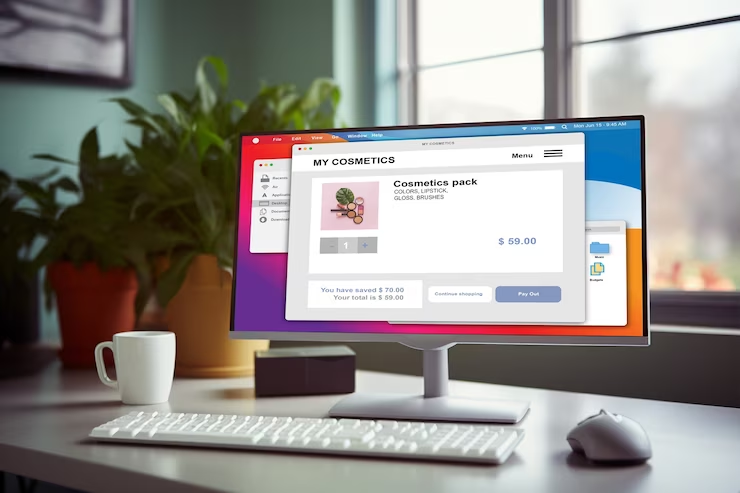Moving beyond Iru Cache opens up a world of possibilities for optimizing your caching needs. Here’s a rundown of compelling alternatives, categorized for easy exploration:
Open-Source Champions:
- Redis: This speed demon thrives on real-time applications, blazing through reads and writes for leaderboards, chat apps, and analytics dashboards. Its diverse data structures handle complex caching like geospatial queries and session management but be prepared for its memory-hungry nature and intricate persistence setup.
- Memcached: Simplicity reigns supreme here. Ideal for caching frequently accessed website assets like images and static content, Memcached scales effortlessly and boasts low cost, but limited data structures restrict its use cases and lack of built-in persistence necessitates external solutions for data durability.
- Ehcache: Java developers, rejoice! Ehcache’s flexibility and customization shine, catering to diverse needs from basic website caching to intricate enterprise applications. Its pre-built strategies simplify implementation, but the learning curve can be steeper compared to simpler alternatives, and managing large deployments might require dedicated resources.
Cloud-Based Contenders:
- AWS ElastiCache: Managed ease meets scalability under the AWS umbrella. Choose between Redis and Memcached engines, enjoy effortless scaling, and seamless integration with the AWS ecosystem, but be mindful of vendor lock-in and potential cost concerns for high-traffic applications.
- Google Cloud Memorystore: GCP integration and high throughput mark this contender. Redis and Memcached options cater to varied needs, but compared to AWS ElastiCache, the feature set might feel slightly restrained, and regional availability limitations could be a factor.
- Cloudflare Cache: Content delivery gets a major boost with this global edge network specialist. DDoS protection and lightning-fast delivery make it ideal for website performance, but its limited data types and lack of suitability for complex caching use cases restrict its scope.

Choosing Your Cache Champion:
Remember, the best fit depends entirely on your unique needs and constraints. Consider factors like:
- Performance Demands: Prioritize read/write throughput, latency, and expected hit rates.
- Scalability Needs: Plan for future data volume and traffic growth.
- Budget Constraints: Weigh deployment, operation, and potential scaling costs against free and open-source options.
- Development Expertise: Assess your team’s familiarity with different solutions and their complexities.
- Existing Infrastructure: Choose a solution that seamlessly integrates with your tech stack. After reading this article, I wrote a quite related article about >>>>>> Alternatives to Redis Cache: Exploring Options for Your Needs to learn more.
Alternatives to Iru Cache.
In my 25 years as a software architect and performance optimization specialist, I’ve encountered myriad caching solutions, each with its own strengths and weaknesses. Iru Cache has carved a niche for itself, but it’s not the only game in town. When seeking alternatives, understanding Iru’s limitations is crucial.
I. Demystifying Iru Cache:
- Purpose and Applications: Iru Cache thrives in high-performance environments where frequent data access necessitates swift retrieval. Think e-commerce platforms, real-time analytics, and social media backends.
- Key Features: Its in-memory data storage ensures lightning-fast reads and writes. Iru boasts flexible data structures, Lua scripting capabilities, and rich persistence options.
- Supported Platforms and Languages: Primarily geared towards Java and Kotlin, Iru extends its reach through integration with Spring Boot and other frameworks.
However, I’d be remiss not to acknowledge Iru’s shortcomings:
- Scalability and Performance: While Iru shines for smaller setups, its performance can bottleneck under high traffic loads. Horizontal scaling becomes cumbersome.
- Customization and Flexibility: Though feature-rich, Iru’s configuration complexity can be daunting for novice users. Fine-tuning its behavior for specific use cases requires significant expertise.
- Community Support and Resources: Compared to established alternatives, Iru’s community and resource pool are nascent. Troubleshooting and finding best practices can be challenging.
II. Exploring the Open-Source Landscape:
Now, let’s delve into the vibrant world of Iru Cache alternatives, each vying for your caching throne:
A. Popular Open-Source Solutions:
- Redis: This in-memory data store, renowned for its speed and versatility, reigns supreme in high-performance scenarios. Its rich data structures and Lua scripting unlock immense customization potential. However, Redis is memory-hungry and lacks built-in persistence, demanding careful infrastructure planning.
- Memcached: This lightweight champion prioritizes simplicity and efficiency. Its lightning-fast read performance and low resource footprint make it ideal for caching frequently accessed data, like website assets. However, Memcached’s limited data structures and lack of native persistence might not suit complex caching needs.

- Ehcache: This Java-based caching framework bridges the gap between simplicity and power. Its pluggable architecture and extensive configuration options cater to diverse needs. However, Ehcache’s learning curve can be steeper than its counterparts, and managing its intricacies on larger deployments requires experienced hands.
B. Cloud-Based Caching Services:
For those seeking managed solutions, the cloud beckons:
- AWS ElastiCache: This behemoth offers scalability and flexibility, supporting both Redis and Memcached engines. Its integration with the AWS ecosystem simplifies deployment and management. However, vendor lock-in and cost considerations for high-traffic applications are crucial aspects to ponder.
- Google Cloud Memorystore: This contender delivers high throughput and seamless integration with the GCP ecosystem. Its Redis and Memcached support caters to varied needs. However, compared to AWS ElastiCache, its feature set might feel slightly restrained, and regional availability limitations could be a factor.
- Cloudflare Cache: This global edge network specializes in content caching for websites. Its DDoS protection and lightning-fast delivery make it ideal for boosting website performance. However, its limited data types and lack of suitability for complex caching use cases limit its scope.
III. Choosing Your Cache Champion:
Selecting the right alternative hinges on understanding your specific needs and constraints:
- Performance Requirements: Analyze your read/write throughput, latency demands, and expected hit rates.
- Scalability Needs: Consider your future data volume and traffic growth expectations.
- Budget Constraints: Weigh the costs of deployment, operation, and potential scaling against free and open-source options.
- Development Expertise: Assess your team’s familiarity with different caching solutions and their configuration complexities.
- Integration with Existing Infrastructure: Choose a solution that seamlessly integrates with your existing tech stack.
IV. A Balanced View: Pros and Cons:
To aid your decision-making, here’s a comparative table highlighting the key strengths and weaknesses of each alternative:
| Feature | Redis | Memcached | Ehcache | AWS ElastiCache | Google Cloud Memorystore | Cloudflare Cache |
|---|---|---|---|---|---|---|
| Performance | High | Very high | Moderate | High (managed) | High (managed) | Varies |
| Scalability | Horizontal scaling challenges | Highly scalable | Moderate | Highly scalable (managed) | Highly scalable (managed) | Not applicable |
| Features | Rich | Limited | Extensive | Multiple engine options | Multiple engine options | Content-oriented |
| Ease of use | Moderate | Easy | Moderate | Easy (managed) | Easy (managed) | Easy |
V. Diving Deeper: Pros and Cons in Action.
Now, let’s take a closer look at the pros and cons of each alternative, delving into specific use cases to illustrate their strengths and weaknesses in action:
A. Redis:
Pros:
- Ideal for real-time applications: Redis’s blazing-fast reads and writes make it perfect for powering leaderboards, chat applications, and real-time analytics dashboards.
- Rich data structures: Redis’s support for sets, hashes, lists, and sorted sets opens doors for complex caching strategies like geospatial queries and session management.
- Lua scripting: Lua scripting unlocks advanced customization possibilities, allowing you to tailor caching behavior to your specific needs.
Cons:
- Memory-intensive: Redis’s in-memory nature demands careful resource planning, especially for large datasets.
- Persistence complexity: While persistence options exist, configuring them can be intricate, requiring careful consideration for data durability needs.
Example: A social media platform might use Redis to cache user profiles, recent activity feeds, and follower lists for lightning-fast retrieval, enhancing user experience and platform responsiveness.
B. Memcached:
Pros:
- Simplicity and efficiency: Memcached’s ease of use and minimal resource footprint make it ideal for caching frequently accessed website assets like images and static content.
- Highly scalable: Memcached’s horizontal scaling capabilities allow you to effortlessly handle high traffic volumes by adding more servers to the pool.
- Low cost: Open-source Memcached offers a cost-effective solution for basic caching needs.
Cons:
- Limited data structures: Memcached primarily focuses on key-value pairs, restricting its use cases for more complex caching scenarios.
- No built-in persistence: Data loss is a risk if servers fail, necessitating external caching solutions for data durability.
Example: An e-commerce website could use Memcached to cache product images, category listings, and shopping cart contents to improve page load times and handle surges in traffic during sales events.
C. Ehcache:
Pros:
- Flexibility and customization: Ehcache’s pluggable architecture and extensive configuration options cater to diverse caching needs, from simple website caching to intricate enterprise applications.
- Java integration: Seamless integration with Spring Boot and other Java frameworks makes Ehcache a natural choice for Java-based projects.
- Caching strategies: Ehcache offers pre-built caching strategies for common use cases, simplifying implementation and reducing configuration overhead.
Cons:
- Learning curve: Compared to simpler alternatives, Ehcache’s configurability can be daunting for beginners, requiring a steeper learning curve.
- Overhead for large deployments: Managing Ehcache on large deployments might demand dedicated resources and expertise for optimal performance.
Example: A financial institution might use Ehcache to cache market data, account balances, and transaction history for faster retrieval and improved user responsiveness within its trading platform.
This is just a glimpse into the pros and cons of each alternative. Remember, the “best” choice depends entirely on your specific needs and constraints. By carefully considering the factors mentioned above and understanding the strengths and weaknesses of each option, you can confidently choose the caching solution that empowers your application to reach its full potential.
In the next section, we’ll explore five highly related questions that delve deeper into specific aspects of Iru Cache alternatives. Stay tuned!
I am commitment to crafting compelling narratives and delivering insightful content continues to inspire and inform readers across various platforms. Explore her articles on AlternativesZone.com and FactAfterFact.com to experience a rich tapestry of knowledge and discovery. Here I Analyze and Test the products and services together with my team before we recommend them to our users. Nice Reading Here!











